Warren Buffet once famously said that “Only when the tide goes out do you discover who’s been swimming naked”. Well, there are signs that that the tide is turning on the hottest waiting list watches earlier this year, with prices dipping by up to 50% for some hyped models. Will this stall the momentum of burgeoning secondary market for luxury watches? Not at all, insists CHRONEXT co-founder and CEO Philipp Man, who welcomes the correction and is seeing nothing but opportunity.
There has never been a time when it has been easier to procure product than it is today, according to CHRONEXT co-founder and CEO Philipp Man.
With authorised dealer showrooms and direct to consumer boutiques for the hottest brands stripped bare like a field of crops after a plague of locusts, the secondary market is the only market that has any product for sale to an ordinary punter.
The primary market is rigged in favour of the wealthiest to such an extent that 99% of customers, who might dream of buying a Daytona, a Royal Oak or a Nautilus as a treat to mark an anniversary, are frozen out.
“Unless you buy a 5-carat engagement ring from an authorised dealer, you will not get the waiting list Rolex you want,” Mr Man advises.
A few months ago, a Corder’s Column for WATCHPRO suggested that Rolex is no longer a retail brand because normal customers cannot rock up to an official store and buy one.
Mr Man agrees that this is the reality and makes a compelling case that this is leading to opportunities for reputable secondary market players like CHRONEXT.

“People stop going into stores because, not only are they not going to get the watch they want, they are also made to feel stupid for even asking. So they go online and search for the product they want from a place that authenticates every watch and can get that watch to you tomorrow,” he describes.
The bigger the gap between supply and demand, the higher prices are pushed on the secondary market by the inescapable laws of economics. “People say these watches are selling at “over retail”, but it is not really over retail, it is the true market price. There is no retail price if you cannot find a single place on the planet where you can walk in and buy the item,” Mr Man insists.
The market price peaked for unicorn watches early this year, and sale prices are off by around 25% for some references. That is leading to even more product being put up for sale through the likes of CHRONEXT.
Prices retreating from their peaks does not mean meaty profits are off the table for waiting list watches. The market price for the likes of the Rolex GMT Master II or Daytona: Patek Philippe Nautilus or Aquanaut; or Audemars Piguet Royal Oak are still two to more times what authorised dealers have to charge, so anybody who manages to buy at the AD rate is still quids-in.

If CHRONEXT is concerned about prices turning, Mr Man is not showing it.
“We are relaxed about whether prices go up or down, but what I will say is that the ongoing shortage of product at authorised dealers has caused people to shift their attention to shopping online, and staying there for good. This is an incredible opportunity for us because, not only are frustrated customers coming to us, we also make that customer so happy that, within two to three years, 30% of them buy from us again. Once customers have had the online experience, with the authentication, warranty and a wide selection they won’t go back, he suggests. “This situation is translating into the best trading conditions and the highest margin opportunities in the history of CHRONEXT,” he reports.
It seems counter-intuitive that shortages in the authorised dealer channel for the likes of Rolex leads to more of its watches being put up for sale on the secondary market.
MoonSwatch madness
Evidence that the phenomenon is real can be seen in the recent hysteria for Omega and Swatch’s MoonSwatch.
Immediate demand outstripped supply many times over, causing riots outside Swatch Shops, but that did not mean the watches did not get resold on the secondary market.
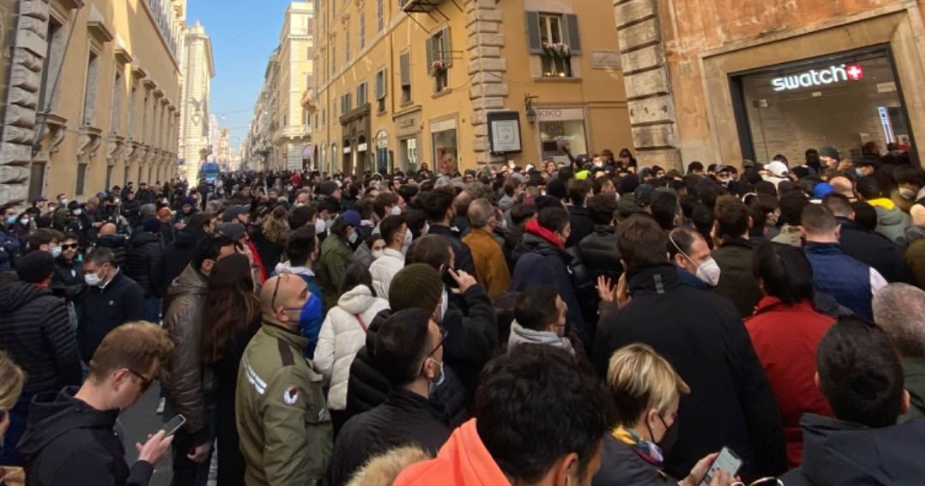
Despite their desirability, thousands of the watches appeared online overnight because the opportunity to make a quick profit was irresistible.
We do not see scrums outside Rolex stores because everybody knows there is no chance of walking in off the street and buying one. If there are watches in the windows, they appear behind the dreaded “Exhibition-Only” signs confirming they are not for sale. “What is the point?” Mr Man scoffs. “If you want to look at beautiful watches you can go to the Patek Philippe Museum.”
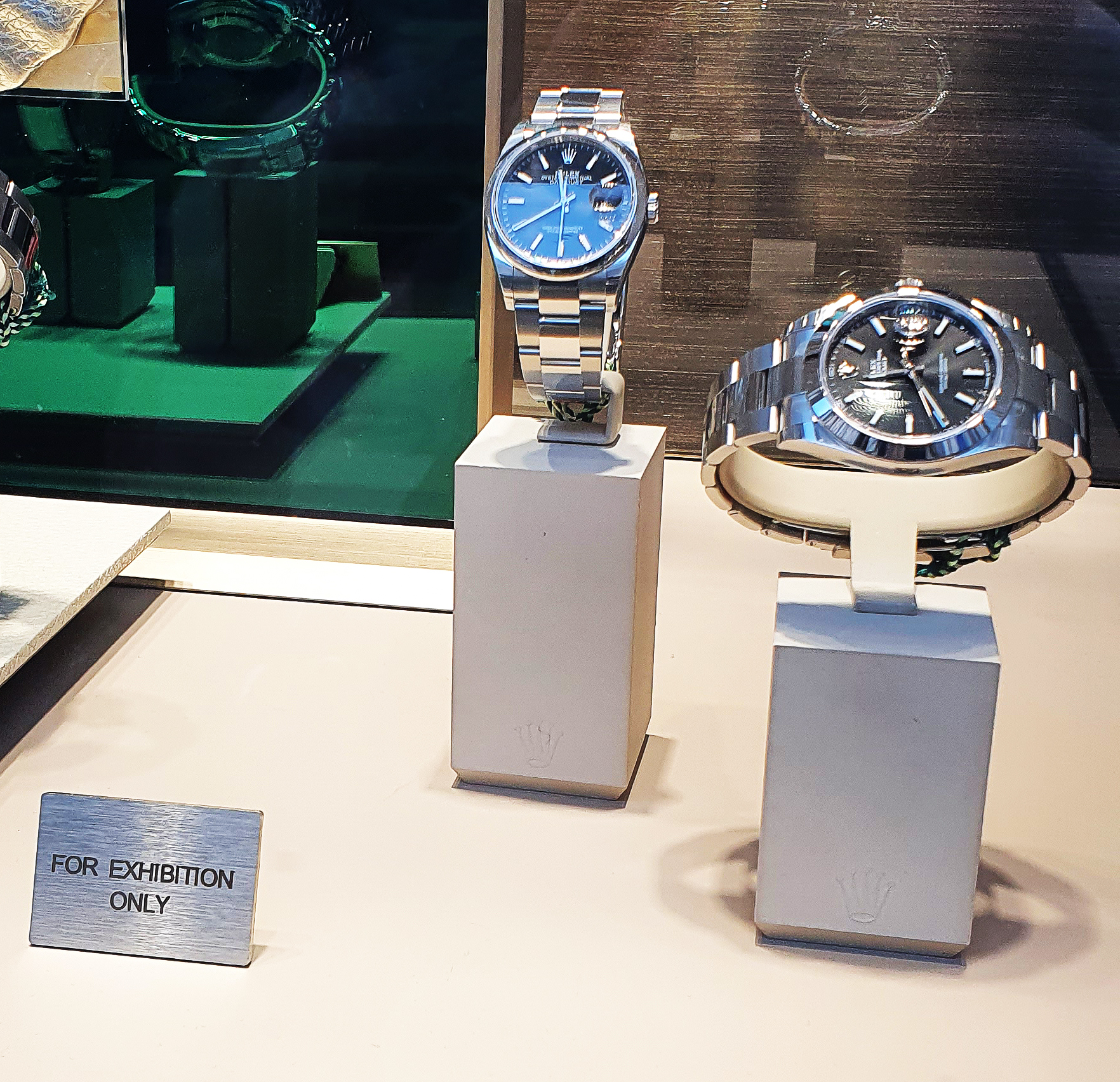
It would be easy to believe that authorised dealers for the hottest brands are suffering when their windows and cabinets are empty. Yes, they have to train their staff to handle frustrated customers. They are advised on how to spot the difference between a genuine customer who wants to own and wear their watches, and a flipper who wants to sell them immediately for a profit. They are terrified that brands could sack them as agents if too many watches they have sold appear on the secondary market and aware that the brands do spot checks on what is being offered online.
One authorised dealer told WATCHPRO, on condition of anonymity, that they bought back a rare Patek Philippe watch from a secondary market platform at twice what they had sold it for because they could not risk it looking like they had sold the piece to a flipper.
Tough luck, but before striking up the violins in sympathy with these ADs, remember that they are selling just as many watches as ever before, and at significantly higher prices set by the brands. The fact that the public cannot see watches being sold simply means they are being allocated to the best customers and stored in safes until being paid for and collected.
It isn’t retail, as we know it, but it is easy money.
If authorised dealers require little sympathy, so-called flippers who manage to beat the system might not deserve the demonization meted on them by the industry.
It is not that black and white, according to Mr Man. “Brands hope customers who buy their watches truly want to wear them on their wrists. I get that. I want that too. However, I do not agree there should be a stigma pointed at the sellers,” he suggests.
Adding: “The attraction is to products that appreciate in value. Even if you do not like it, it is naive to assume that somebody will not sell something that brings in a ten, twenty, fifty thousand dollar profits. That is real money and often reinvested in new higher-value assets. At the end of the day, there is no way you can stop people monetising the profit sitting in their watches,” he states.
Even if flipper is a pejorative term, it should not be applied to every individual who has sold a watch for its market value. “When people say flippers, it is not a job title or a type of person who has it tattooed across their foreheads. Most of the time, people who flip a watch did not intend to sell it when they bought it. But the money they can make is so alluring, it is hard to resist,” Mr Man insists.
Perhaps the only time that flippers identify themselves is when they are playing the game in precisely the way some authorised dealers want them to.
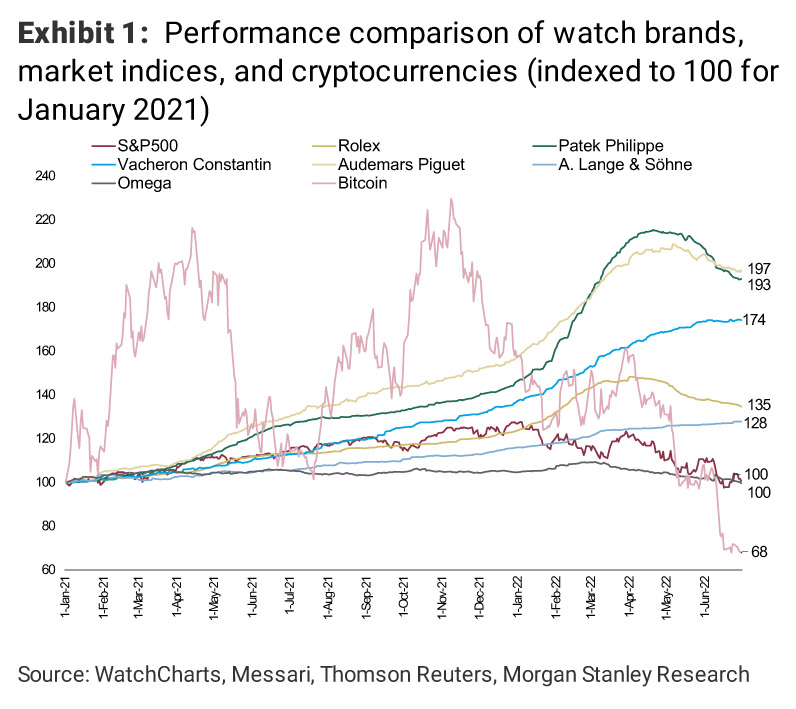
“The AD wants an end consumer to buy watches, but what happens is that customers cannot buy the watch they want without first buying a load of jewellery they do not want. If a customer decides to play that game, they end up selling off the jewellery because it was only part of a transaction to secure the watch they wanted,” Mr Man describes.
Much has been written about this version of flipping, but there is another version that only a red hot market of continuously rising prices makes viable: the business-to-business flip.
In this instance, professional traders buy watches from other dealers at well over retail prices in the expectation that they will rise even further and create a profitable opportunity. This pours paraffin on an already raging fire because it is in everybody’s interest to drive prices ever-higher. It is also the most volatile because, in a cooling market, professional buyers sit on their hands in the hope that prices will fall further and create a more profitable buying opportunity down the line.
This is precisely what has been happening for the past few months, with prices falling by as much as 50% since March.
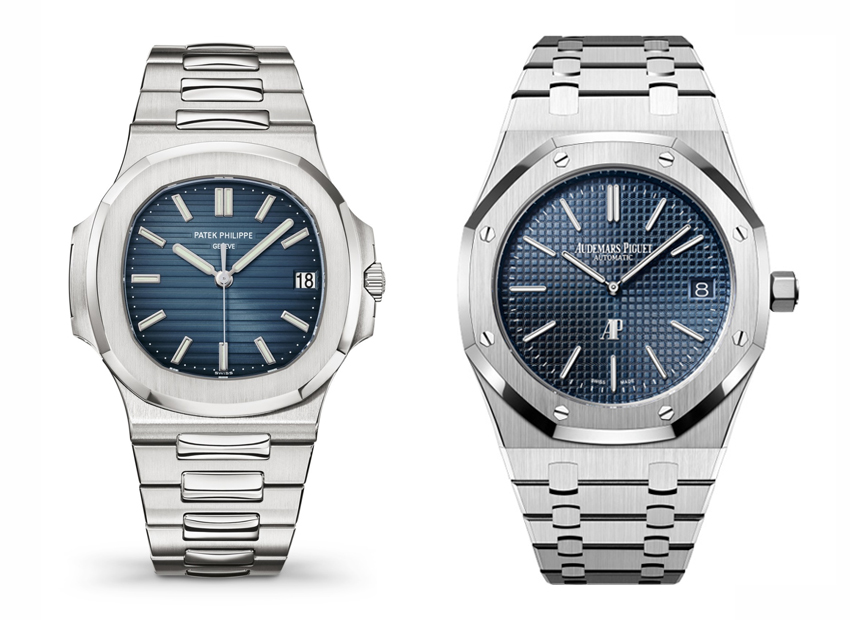
“We are seeing small corrections on very high-end watches like Royal Oaks or Nautiluses, But prices for all these watches are still at the level of the beginning of the year and significantly higher than a year or two ago. Same for the more affordable steel sport Rolex watches, prices were corrected a little bit, but they are still very significantly above list price and have been for a long time. Retail availability is still very limited, and this will not change,” Mr Man predicts.
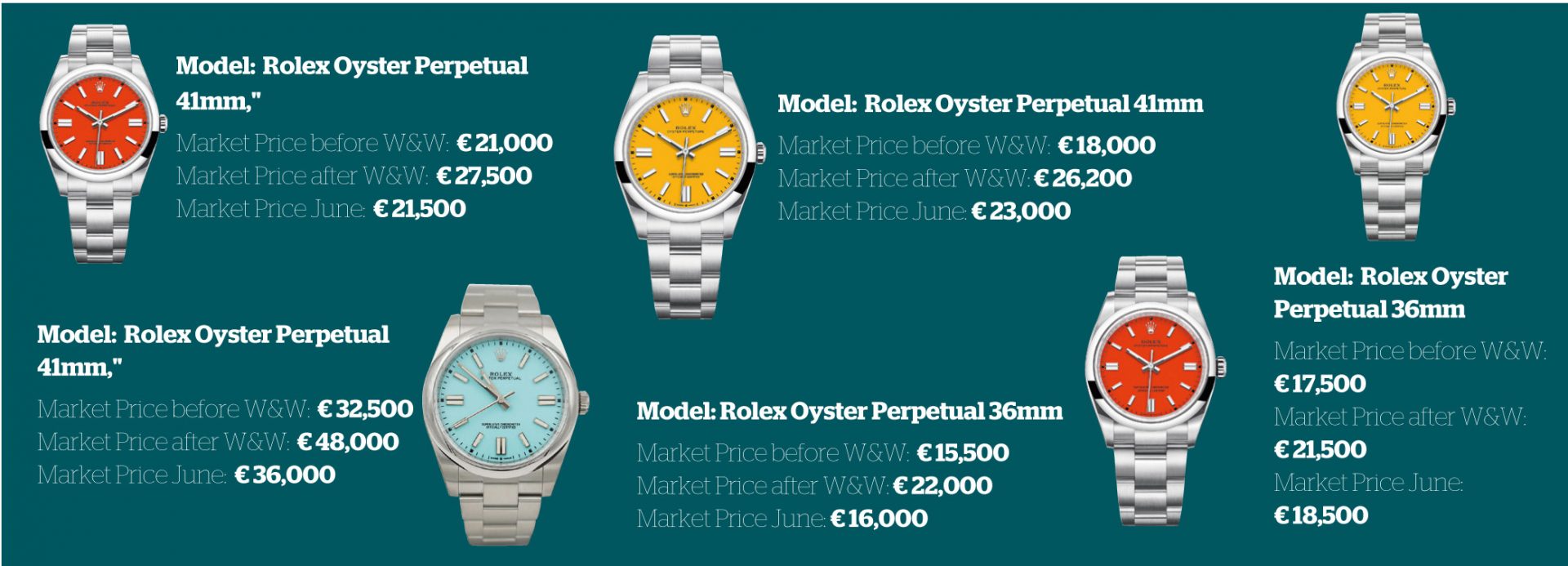
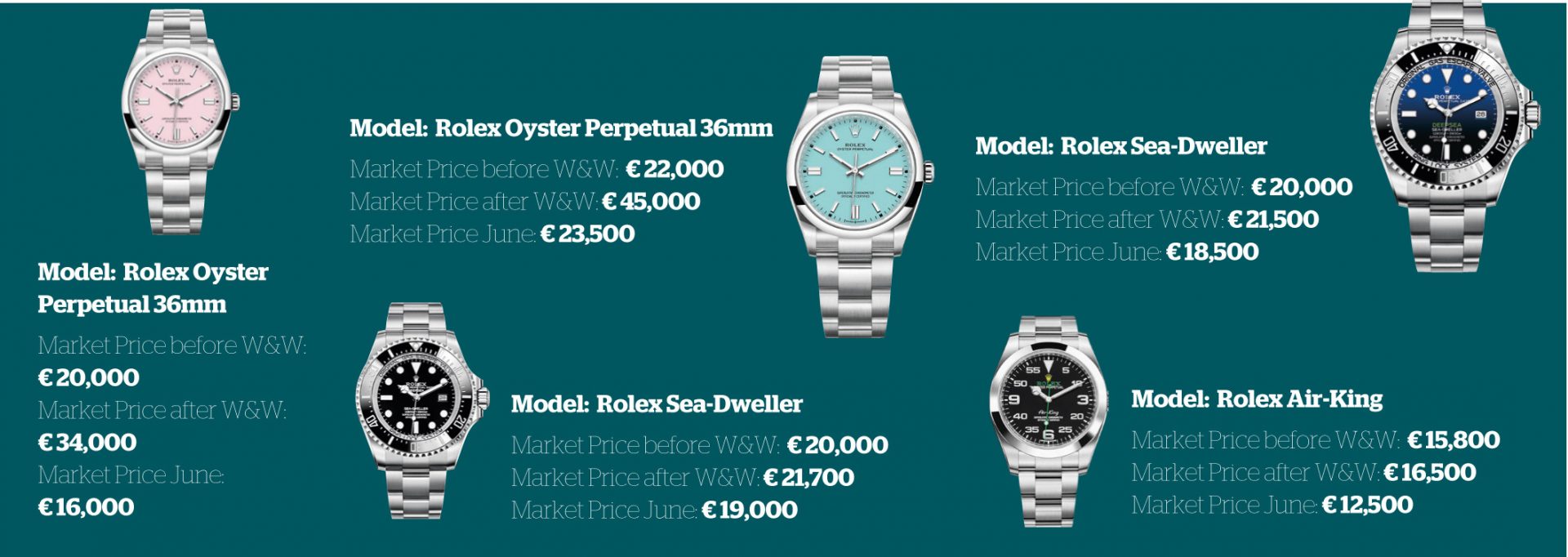
Morgan Stanley’s annual report on the state of the Swiss watch sector estimated that Rolex unit sales dropped by 20% from 1 million to 810,000 between 2019 and 2020.
Omega’s volume fell from 720,000 to 500,000. The same research saw a strong recovery in 2021 with Rolex unit sales back up to 1,050,000 and Omega to 570,000, contributing to an all-time record year for Swiss watch exports.
2022 also started strongly with exports growing by over 30% year-on-year in January, February and March. Little wonder the mood at Watches & Wonders in Geneva was so ebullient.
The froth came off in April, with the top six global markets for Swiss watches growing by a more modest +15.9%. Hardly a recession, and unlikely to fix the worldwide drought any time soon.
“Shortages look like a permanent feature because demand is outstripping supply in a structural way,” Mr Man suggests. “We saw a bit of a correction, but structurally prices will remain above retail for a very long time. Then the question is, what is an acceptable amount to pay above retail? Is it 20% above, as used to be the case for steel Daytonas as recently as 2014. Or is 6-times retail the right amount? That is not certain, but I see prices for Rolex, AP, Patek Philippe etc, continuing at over retail. The question is just for how many models and how much delta to retail prices.”
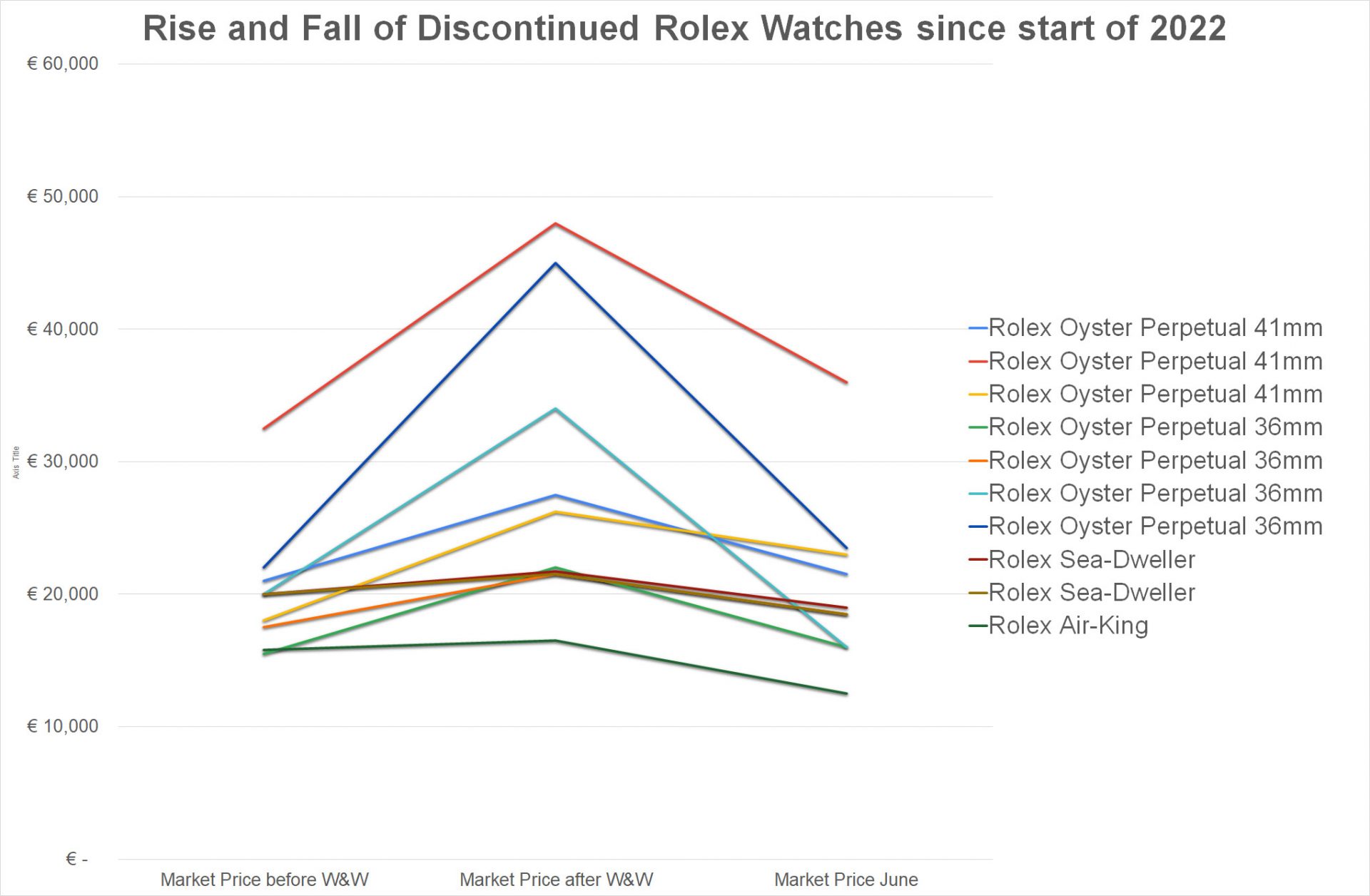
It is often said that professional flippers are responsible for such eye-watering prices, but if CHRONEXT’s Mr Man is right, there is a much more deep-seated, structural driver of demand and therefore prices, and that is the rising number of wealthy people who can afford luxury watches, and the way they are being influenced by marketing.
More than five million people became millionaires across the world in 2020, according to Credit Suisse research. More than 42% of millionaires live in North America and 28.1% are in Europe. That is an awful lot of existing and new rich people with the money to buy a Rolex, Cartier or Omega.
Mr Man believes that luxury watches have also become more desirable as a result of Instagram and other marketing. “More and more customers are being drawn towards the luxury watch category. Social media is continuously accelerating that rising demand because showing them off on Instagram suggests a certain lifestyle and success in life. That is basically the Rolex marketing campaign as well. That will mean prices remain structurally higher than retail,” he says.
When it comes to the cost of living crunch the world is enduring right now, Mr Man’s optimism is undimmed. “What we see every day is that new money keeps coming to this market and customers are prepared to buy at $50k in cash.
Little wonder that investment has been flowing into the secondary market space, starting with Richemont’s acquisition of Watchfinder. Hodinkee raised $40 million in 2021 and promptly acquired Crown & Caliber. Watchbox launched in 2015 with an investment bank roll of $200 million and has received additional funding since to put towards buying more stock and opening trading lounges across the United States and internationally.
CHRONEXT has closed a number of 8-figure funding rounds, even though it makes a profit on every watch it sells. This before you get to the incalculable money being invested by giants like eBay, Amazon and Chrono24.
Despite growth, the market is still highly fragmented, and Mr Man believes nobody has more than 10% market share. That may lead to mergers and acquisitions, as we saw last year with Chrono24 buying British pre-owned specialist Xupes and Watches of Switzerland buying Analog Shift in the United States, but it will likely take years for any market leader to build a dominant position.
CHRONEXT’s own research suggests the majority of players are still quite small, particularly those that have watches on their balance sheets like Watchfinder and WatchBox. Among those doing listings, eBay is by far the biggest, but even eBay does not have anything like 25% of market share globally. “Consolidation is about to happen. It has started, but it is still early days,” Mr Man describes.
How that consolidation will play out is another question. Many of the most prominent players are backed by venture capital or private equity, and they will be looking for an exit at some point. For larger businesses that might be an IPO. For smaller ones, they might to sell to somebody.
It would be foolish to gaze into a crystal ball and believe the entire future of the secondary and pre-owned market will be revealed. There are simply too many variables. For example, what will major brands do about certified pre-owned (CPO)?
At Watches & Wonders, there was a rumour doing the rounds that Rolex is working on a plan to bring CPO to its network of authorised dealers and service centers. Does that trouble CHRONEXT? Not at all, according to Mr Man.
“We do not know what they have planned, but I think it would be great because it would further legitimise the pre-owned category and encourage people to consider pre-owned as a natural alternative to new,” he says.


CHRONEXT: the most expensive grey sellers out there; yet one of the meanest when you approach them to sell your watch. It’s companies like this which are inflating the market and pricing out genuine watch enthusiasts.
I would bid 6 million but in hindsight it probably won’t be enough